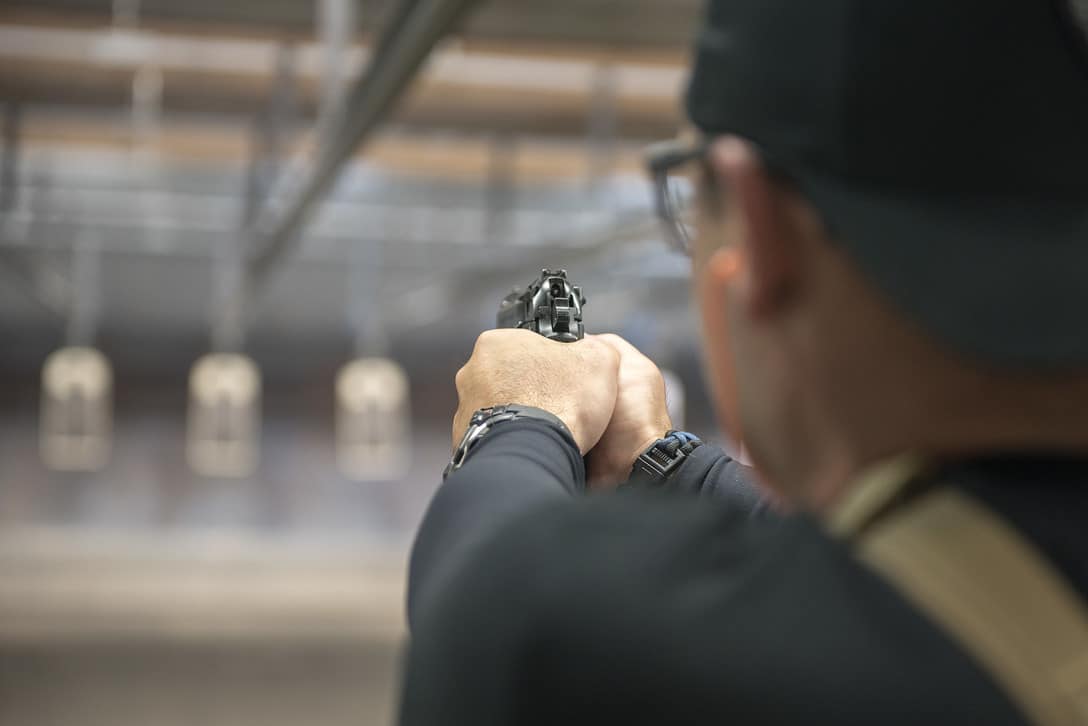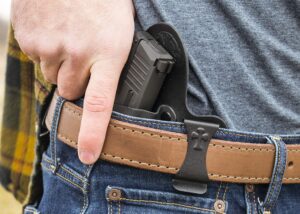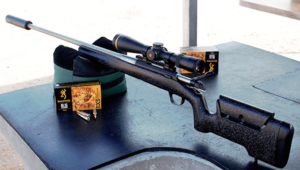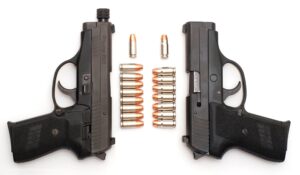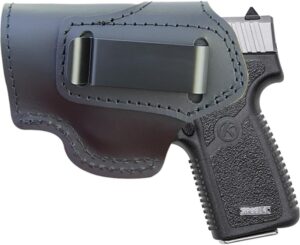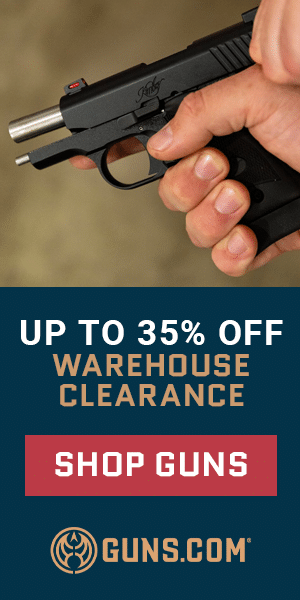Prepping appropriately means knowing how to defend yourself. That means using lethal force, if necessary. After all, your goal as a prepper is to remain safe and protect yourself and your property. But stocking up on ammo and guns isn’t enough. You need to know how to shoot and shoot well under stress. If the time ever comes, pulling the trigger will require no hesitation and a lot of confidence. You need to build your shooting skills into your muscle memory.
Unpack This Article's Arsenal
Get Great Guns And Ammo Deals!
SAFEST NEWSLETTER - WE WILL NEVER SELL YOUR EMAIL
No Spam - No Selling Your Email
You Need to Practice Defensive Shooting Drills
This guide will teach you how to shoot effectively with handgun drills. We’ll first review drills that focus on improving your stance and quick-draw, followed by your grip, sight picture, and aim. These pistol drills will get you confident behind the trigger when speed counts.
Then we’ll look at drills that teach you how to master malfunctions and clear jams. We’ll also review some drills you can practice with long rifles. This will ensure you’re capable of reacting to a threat and retaining the upper hand, even if your rifle or pistol doesn’t want to cooperate.
1. The Quick-Draw Drill
Defensive shooting means reacting to and dispatching the threat quickly. If you’re facing an attacker, there won’t be time to draw your weapon and consider the situation.
The quick-draw drill is exactly what it sounds like: Practicing how to quickly draw your weapon and get a bead on the threat in front of you.
This is the meat and potatoes of all pistol shooting drills. If you can master the quick draw and an appropriate sight picture, you’ve covered the basics.
Play with Holster Placement
We’re covering this first because this drill also teaches you how to configure your holster and troubleshoot your setup. Depending on your build and holster type (inside or outside the waistband), you may find that shifting from a 3 o’ clock position (pictured above) to a 4 or 6 o’ clock position (dependent on your left- or right-handedness) makes drawing easier.
This is especially true if you’re rocking an IWB holster:
Your holster position should allow you to grip your handgun with at least three fingers. It should also prevent you from having to excessively bend your arm or twist.
You should be able to keep both feet planted in a shooting stance with your eyes, face, and body directly on target while you draw. Play around with holster position while you perform this drill if you find drawing quickly is difficult.
Practicing the Drill:
First, assume a shooting stance. Ensure both feet are planted firmly. You should be directly facing your target. Your feet should be shoulder-width apart.
Work on your grab. With your shooting stance assumed, practice pulling your weapon from its holster. Get a feel for the movement. Is it natural? Can you keep eyes on target and feet planted? Can you get your grip high on the gun’s backstrap? Make adjustments to holster position as needed.
Practice drawing. Next, get comfortable with pulling your weapon up to the high-ready. As soon as your gun clears the holster, work on rotating the muzzle toward the target while you bring it up.
Practice your grip. While moving the muzzle on target, have your offhand meet your weapon and main hand directly in front of your chest, pushing out and extending your arms toward the target. At this point, you should be practicing the appropriate grip:
- The “V” between your shooting hand’s thumb and index finger should be high on the backstrap.
- The trigger finger should remain indexed on the side of the slide until ready to fire.
- Your remaining fingers and thumb should be gripping the mag well.
- With your supporting offhand, place the muscle area of your thumb and your palm on the exposed side of the grip, opposite your shooting hand.
- Wrap your offhand fingers and thumb over your shooting hand fingers and thumb. Don’t interlock your fingers.
- Both thumbs should be on the same side of the grip. Your offhand thumb should rest atop your shooting hand’s thumb. Ensure the offhand thumb is not in the way of the slide. You don’t want slide bite.
Practice sight picture and firing. With the appropriate stance, holster position, quick-draw, and grip figured out, you can start slinging rounds on-target.
Rinse, wash, repeat. We recommend placing three-shot groups on-target, then re-holstering and repeating the drill. This will allow you to triangulate your shot placement and figure out if your sight picture or grip are wonky.
Practice this drill until you can confidently maintain a shooting stance, perform a quick-draw without failure or hesitation, get on target consistently, and make consistent groupings. Then, continue repeating this drill for as long as you own your guns. Work on getting faster and faster. Invest in a shot timer to help gauge your speed. It’s the only way to learn real muscle memory.
2. The Mozambique Drill
Now that you know how to quick-draw and meet your target, it’s time to practice what you should do when the threat in question is coming hard and fast. Usually, a single round or gut shot won’t do the trick.
You need to practice shot placement so you can ensure each round on target works to quickly bring down the threat. We’re talking about the Mozambique Drill, commonly known as the Failure to Stop Drill.
Build This Drill into the Quick-Draw Drill
Ideally, you should be practicing the Mozambique Drill while you’re running through your quick-draw drill. The Mozambique Drill (also called the Failure to Stop Drill) is incredibly simple:
- Put two rounds center-mass, in the chest
- Put the third round in the head of the threat
That’s it.
Practice getting two rounds on the center mass of your target.
Work on getting that third round right between the eyes, nose, and mouth. Crudely known as the “double tap”, this drill is guaranteed to stop any attacker, regardless of weapon or caliber.
3. Clearing Jam Drill
You can call this the “Oh, crap” Drill, and it’s critically important you practice. Anyone can “get good” at anything when conditions are right. Real skill comes in fixing malfunctions and deficiencies and achieving the same standard.
This philosophy applies to defensive shooting. With this drill, we’re practicing how to clear a jam or weapon malfunction so we can get back into the fight quickly – in a matter of seconds, at most.
You can practice this drill with handguns and semiautomatic rifles like the AR-15. Want to learn how to build an unregistered survival rifle using an 80 lower receiver? Click here to read our full guide.
Setting up this drill requires the use of a snap cap (an inert round), or a spent shell casing. Using either option, we’re simulating a round that got stuck feeding, a dead primer, and a stovepipe.
All these common malfunctions can be fixed with this drill:
Chamber your snap cap or casing. Make sure your weapon’s in battery with the spent casing or blank in the chamber, ready to fire.
Load a magazine. You can technically practice this drill at home with no live rounds, but it greatly helps to practice shooting live rounds at the range after clearing a malfunction.
Prepare to fire (Bonus: Use a timer). Obtain a good shooting stance and get your weapon to the high-ready position with a good sight picture.
It helps to use a buddy with a whistle or a shot timer for this drill. A shot timer can be programmed to randomly start your drill with a buzzer or ringer. This will help simulate an unexpected jam.
Clear the jam. When ready – or when the shot timer rings – immediately move your offhand to your weapon’s magazine and remove it. Quickly rack the slide or charging handle several times to clear the simulated jam.
Reinsert your magazine (empty or with live rounds), rack a new round, obtain your sight picture and pull the trigger on-target. This completes the drill. Repeat this drill at a slower speed, mastering each movement and step. Work on getting faster while retaining accurate shot placement.
Summary & Tips
Practicing the quick-draw drill will make you more confident with your handgun. It’ll teach you how to react to threats and draw your weapon quickly. The Mozambique Drill will improve your ability to quickly acquire a target and put rounds where they’re most lethal. Practicing clearing jams is critically important, too – you can’t always count on your weapon working 100% of the time.
To make defensive shooting drills more beneficial, we recommend a few things:
- Always know what’s behind your target, even when practicing.
- Wear appropriate hearing and eye protection while practicing.
- Invest in a programmable shot timer to start your drills for you.
- Have a range buddy help you analyze your quick-draw, grip, and shot placement.
- Practice each drill with live rounds by placing three shots on-target. This will help you work on your accuracy and sight picture while you’re also trying to improve your speed.
Recommended Reading
Practice Better Gun Handling With The Center Axis Relock


